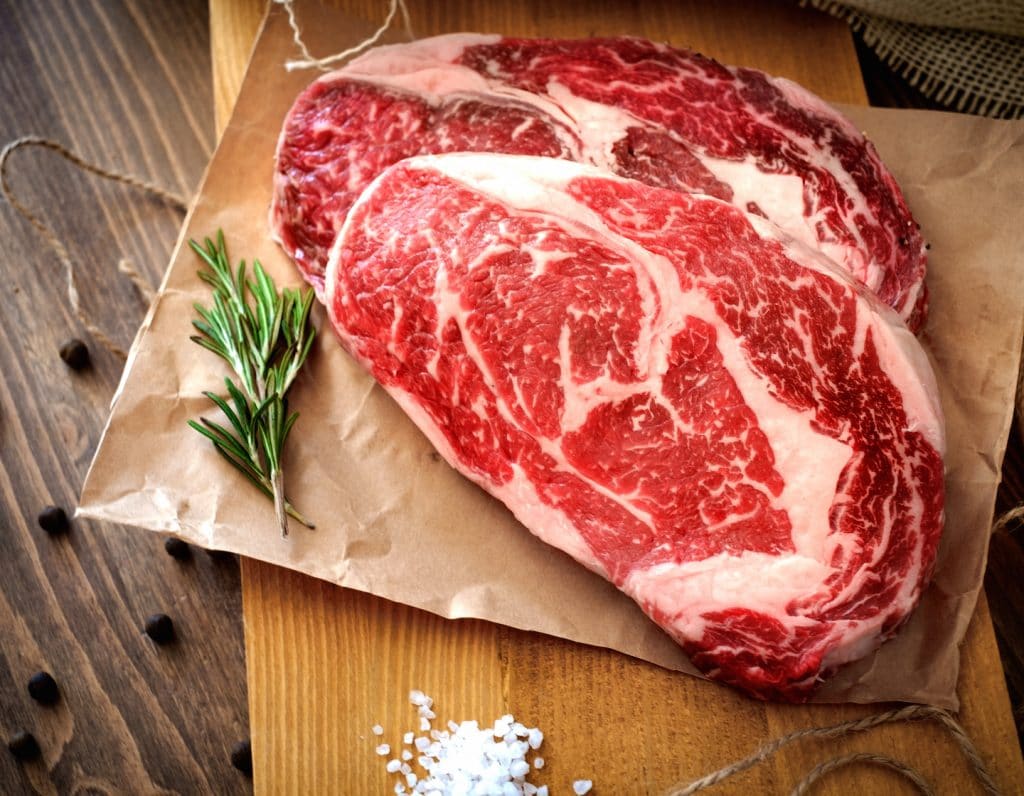
Should we be beefing up our consumption of red meat, or cutting back? What’s the difference between grass fed and grain fed, and how to choose the right cut? Here’s where to find the best beef in Singapore…
There are so many fad diets around at the moment – Keto, Paleo, Atkins, intermittent fasting… and more! Many of them suggest certain food groups to be substantially reduced or eliminated entirely. But is it good for us?
How much red meat should we be eating, or should we be avoiding it altogether? Is grain-fed or grass-fed meat better for us, and does it taste any different? How do you choose the right cuts of meat and how is it best stored? We’ve got all the answers as well as an Aussie barbecue expert’s top tips for grilling the perfect steak.
Is red meat good for you?
In the right amounts and if good quality lean meat then yes, it is. Red meat contains high amounts of protein, as well as zinc (essential for a healthy immune system), selenium and several B vitamins including B12, omega 3 and iron. All of the above are important nutrients that active families should be including in their diets to function well.
For women, it’s really important to eat iron rich foods. In fact, women have twice the iron requirements of men, due to periods. Even more iron is also required if pregnant or if you suffer from heavy periods. Iron deficiency can cause anaemia and lead to symptoms like fatigue, dizziness, headaches and shortness of breath.
Read more: A doctor explains why iron deficiency affects so many women
You can source iron in tofu, quinoa, spinach, eggs and legumes as well as cereals with added iron. This is what’s called non-heme iron, which needs to be combined with foods rich in vitamin C to help the body absorb the iron. Heme iron, found in beef, lamb, fish, shellfish, pork and chicken is the best form of iron from an absorption point of view, as up to 40% is readily absorbed by your body and it is retained better.
Quality is key, though. There’s a lot of rubbish out there, with added hormones and antibiotics and so it’s crucial that we know what we are putting into our bodies! We also want to be satisfied that the meat we are choosing is ethically sourced with as little impact on the environment as possible, so finding the right place to buy meat is key.
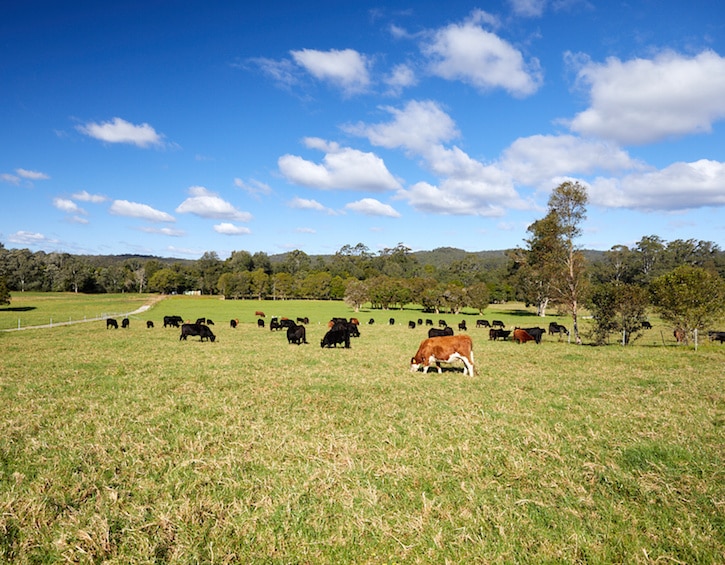
What does sustainably/ethically sourced actually mean, and is it worth the extra money?
This is a huge subject! But the short answer is yes, it is worth the extra money! Sustainable sourcing is the integration of social, ethical and environmental performance factors into the process of selecting product suppliers. In other words, making sure that the meat (or fish/dairy/veg etc.) that we buy has been grown and manufactured with our health, our futures and the welfare of animals in mind. Is the meat additive, antibiotic or hormone-free and of high quality? Has the environmental impact of producing this product been considered?
Hazardous carbon emissions, too much water usage, over fishing/farming are all impacting our planet and our future. The good news is that there are some great shops in Singapore who make it their business to make sure that the products they sell have all been sustainably sourced. With the importation of most of our food to Singapore it is also key that the countries we are buying from also have high safety and integrity systems in place too. They often have a long way to travel, so it’s crucial that fresh foods are packaged correctly, at their best and are kept at the correct temperatures throughout the transportation process.
Australian meat is a good option to choose here in Singapore, as their standards are set very high and the process from paddock to plate is monitored very closely. In fact, Meat and Livestock Australia, known as the MLA (an industry research and marketing body that services approximately 50,000 of Australia’s cattle, sheep and goat producers) has also released a statement in 2018 to say that the meat industry of Australia has set a target to be carbon neutral by 2030 which is great news.
If you’re wondering where you can find meat that, well, meets these exacting standards, Alternative Selection is a leading wholesaler and retailer that supplies Australia’s first carbon-neutral certified beef here in Singapore. Emphasising responsible sourcing and specialising in gourmet, organic, allergen- and preservative-free specialty foods, they supply a comprehensive range of organic and free-range meats including beef, lamb, pork and game meat to their retail arm Ryan’s Grocery, Singapore’s only full-service organic butchery and gluten-free specialist store, where you can also purchase and special-order small goods like nitrate-free hams, sausages, meatball and meat platters.
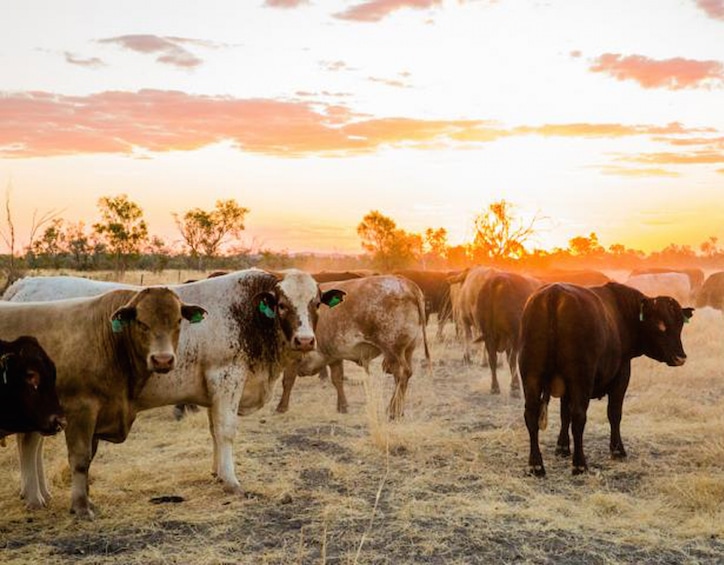
Animal welfare in another important consideration. It is easy to turn a blind eye to how a product ends up in the shops or markets here. However production processes and animal welfare standards vary enormously from country to country and we shouldn’t presume that because a product looks tasty, that it has been produced in an ethical way. Alternative Selection imports Five Founders Natural Australian Beef, which is produced exclusively from free-roaming cattle from the Australian Outback. Grass-fed and grain-finished, Five Founders beef has no added hormones, and a distinct and delicious natural flavour. You can find it at RedMart, select FairPrice outlets, and Ryan’s Grocery.
Eating red meat does impact the environment whichever way you look at it, but there are certainly producers, who are doing their bit to try and reduce this impact. Most suppliers, whether shops or butchers claiming to supply ethical and sustainably sourced products, should be happy to answer questions about their products from field to plate, so don’t be too intimidated to ask lots of questions! The Meat Club is another one of our go-tos, as they source high-quality Australian beef, lamb, pork, chicken and seafood, and are run by no-nonsense mama Amy Bell. We’ve also really liked what we’ve seen from newcomer The Farmer’s Market, which offers 100% grass fed beef and wagyu from Australia; love the value of the fresh and frozen options at The Fishwives; and really appreciate Sasha’s Fine Foods’ commitment to sustainable sourcing.
How much red meat should we be eating?
It’s good to mix up your choice of protein, as each type gives you a different set of nutrients. The Australian dietary guidelines recommend approximately 130g of lean cooked red meat three times a week for adults. When it comes to eating red meat, alternating portion sizes probably works better. You’ll need less minced beef in a bolognese (perhaps 125g raw) as opposed to a beef or lamb steak, when you are likely to have 200g raw meat. A good way to add extra nutrients is to combine proteins – for example adding some lentils to a beef chilli or some quinoa to a stew.
Read more: The benefits of ‘Flexitarianism’ and knowing where your food comes from
What’s the difference between grain and grass-fed meat?
As the terms imply, cattle are fed on grass or grain during their lives.
Grain fed meat tends to have a higher fat content and contain fewer healthy fats. Grass fed contains higher amounts of CLA (conjugated linoleic acid), which is a naturally occurring fatty acid found in beef and dairy products. However, opinion is mixed on how much one differs from the other nutritionally.
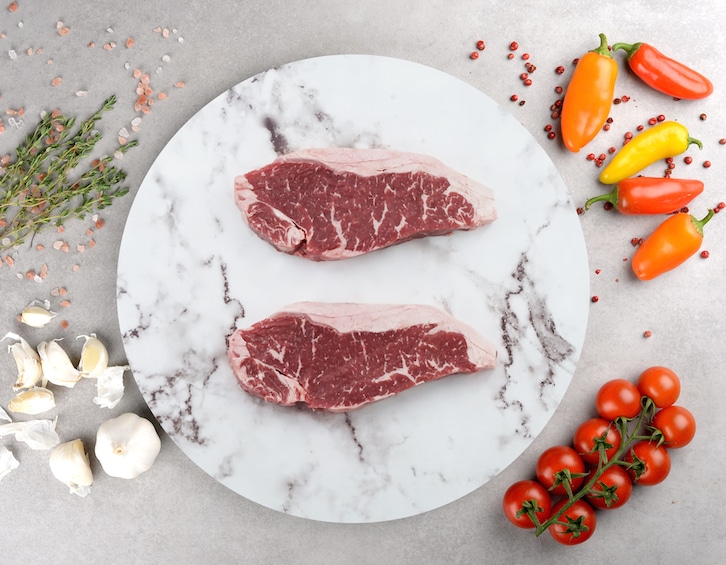
As far as taste goes, grain fed beef has a mellower, smoother flavour, which comes from the extra fat it contains. Grass fed has a richer more buttery flavour and is sometimes described as being more ‘beefy’ or earthier in taste. It really is a question of taste as to whether you prefer one over the other. There are also other factors such as wet or dry aging which can also affect the texture and taste. Quality meat has usually been aged for a length of time. Beef that is 5 weeks dry-aged is often thought to be the ultimate, but only a very small amount is sold in Singapore, and you will pay a premium price for it! One of Singapore’s favourites, Wagyu beef, is aged for even longer.
Which cuts are best?
When discussing health then the leaner cuts are always reliable. Classic quick cooking cuts include chops, cutlets, fillets and lean steaks. But, it’s ok to use the fattier cuts as well — just make sure to drain off the fat during or after cooking. When stir-frying, for example, you can pour off excess fat after browning to reduce the fat. You can also place a roast on a rack in a tin, or on the barbecue, so that the fat drains off (just make sure to pour most of this fat away before making a gravy or sauce. Some fat is good, however, as it keeps the meat juicy during cooking. Cheaper cuts like shoulder of lamb are great for casseroles and curries. Again, just pour off excess fat after sealing, before adding the rest of the ingredients.
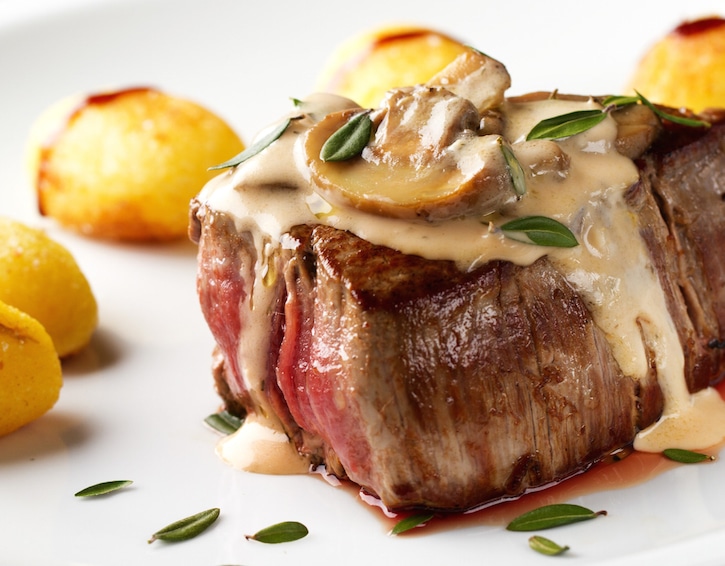
If you are keen to keep sustainability in mind, then asking your butcher to recommend some of the less popular cuts is a great idea, as this uses the whole carcass. Blade of beef comes from the shoulder and is a great family option for a cheaper roasting joint or cut thinly for stir-fries or curries. Rump also has a reputation for being tougher, but if prepared the right way it is also a fabulous cut to use for a roast or marinated steak on the barbecue.
Cutting meat across the grain (look for the natural lines or grains in the meat prior to cooking then cut the other way across) will increase the tenderness substantially.
If you can, always buy lean mince and try to make burgers or meatballs yourself. That way you can see what’s going into them! It’s always a good idea to look at the fat on the meat before buying.
What should we be looking for when choosing red meat and is it ok to buy vacuum packed meat?
With all our meat in Singapore being imported it’s really worth using a butcher or shop that you trust, with a high turnover of quality product to ensure that meat is at its freshest and has been sustainably produced. Some meat comes in frozen and some is imported already vacuum packed. The process removes the air and makes a vacuum around the meat keeping it fresh for longer. Meat that is vacuum packed and kept at the correct temperature (3 degrees or less) during transportation should have 120 days from its packaged date. When looking at a vacuum bag there shouldn’t be too much, if any, excess liquid around the product. The seal must also be unbroken. The meat should not look patchy in colour and should not be a strange colour either! Most beef should be a rich red colour. Dry aging does darken meat however so don’t be put off by this! When you get the package home you must refrigerate it, freeze it or use it straight away. When you open the packet there might be some odour, but crucially the smell shouldn’t last.
There are also vacuum machines available for home use. These are great if you want to buy your meat (or fish) in a larger piece, which is often cheaper, then cut it to size at home.
Freezing and thawing meat
Freeze fast and thaw slow is a great motto to keep in mind! Freezing does lose a bit of moisture in any product so it’s worth keeping a note of when the meat was frozen and making sure that the item is well wrapped. Zip lock bags are great for this as they are thicker and therefore more protective than cling film. Thawing should never be done quickly. Overnight in the fridge is best – especially in Singapore! Never be tempted to defrost food directly in water for swift thawing – water contains bacteria, too!
How is it best to cook red meat?
There are many ways to cook red meat but if you are not confident in the kitchen it’s a good idea to follow a recipe, to avoid disasters! With leaner cuts of lamb or beef, it’s a good idea to cook them quickly. Because they contain less fat, they can have a tendency to dry out. As a general rule, for smaller cuts, bring the meat out of the fridge about 15 minutes before you want to cook it. Season with oil and salt (a sprinkle of dukkha or curry spices, some garlic or woody herbs like rosemary or thyme can also be added), then seal at a high heat, being careful not to burn, until browned all over. Then turn the heat down to medium and cook to your liking. Season with pepper and cover loosely to rest. ‘Steakmate’ is a great app to help you with smaller pieces of meat. For larger joints, use ‘Roastmate’. Both are brilliant failsafe hand-holding apps to help cook meat to perfection.
Is resting meat only necessary for larger joints?
Resting any meat will give it time for the juices to distribute back through the meat and relax it – making it more tender. For smaller cuts a good rule to follow is to rest for as long as it’s taken to cook. This simply means covering the meat loosely with foil to keep it from cooling down too much. A larger joint needs a minimum of 15 minutes resting time before carving. There’s no need to rest a slow cooked recipe however, as it should be wonderfully tender already!
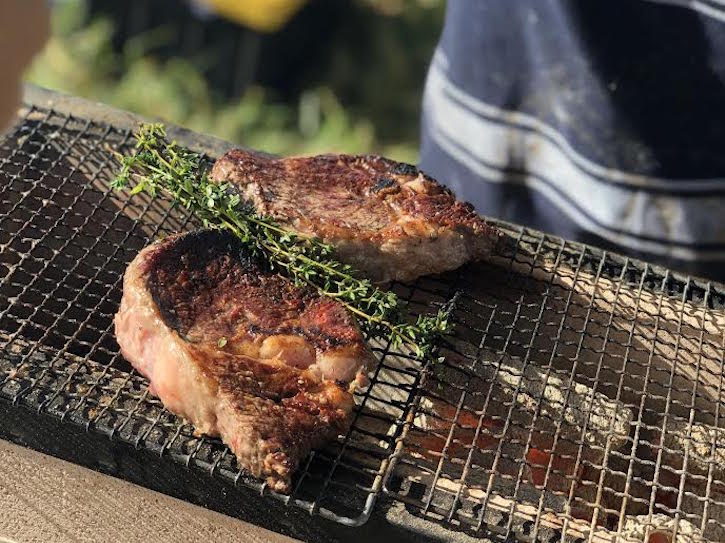
How should I cook the perfect steak?
We asked Aussie barbecue expert and chef Sam Burke for his top tips:
Choosing your steak
The ideal thickness for a steak cooked over coals or in a griddle pan is about 3cm. Too thin and it becomes tricky to get a lovely crust on the outside but still juicy within. Look for good fat coverage, and some marbling. The steak should be a lovely deep red colour (it will be darker red if it has been dry aged). Scotch fillet or ribeye are his personal favourites.
A marinade is an option but if the steak is great quality then there’s no need for much more than some seasoning and a brush of canola oil. You can use a bunch of thyme (or with lamb, rosemary) as a brush for oiling the steaks during cooking.
Starting off
Take your steak out of the fridge approximately 20 minutes before you want to cook it. This makes it easier to cook it to the correct doneness and the meat will have more flavour. Preheat your barbecue until very hot. Get a pair of tongs and a board at the ready. Just before you are going to cook it, brush with oil and season generously with sea salt on both sides. Leave the pepper till after cooking as it burns.
Turn the heat up
The griddle pan or barbecue should be at its highest heat when you put the steaks on. Leave them to sear till they have a good crust then turn.
Turn the heat down
Once the steaks are a lovely colour on both sides, turn the heat down to medium, or move them so that they are at a cooler place on the grill. Leave them to gently sizzle, turning once, until they are cooked to the doneness you want. Then remove them to a board and season with pepper.
How to check if they are done?
The more cooked the meat, the less malleable it becomes. Strangely you can use your own thumb to compare and work out the doneness of your steak! If you poke your finger on your right hand into the base of your thumb, with an open palm, the texture you feel is the same as raw meat. Now make an ok sign with the thumb and index finger. Press the base of the thumb again. This is how a steak will feel if cooked rare. The middle finger to thumb next – medium rare, ring finger is medium well done and finally your little finger is well done. As well as the above you can use the steakmate app as mentioned above!
The all-important resting!
As mentioned before, you might want to tuck in, but it’s best to put the steaks on a board and let them rest and relax. Once you have seasoned with pepper, just cover them loosely with foil and leave for the amount of time they took to cook. Using a sharp knife, slice the steak across the grain and transfer to a platter. Now all you need are the crunchy chips and a nice bottle of red!
![]() Are you feeling as hungry as we are, mamas? You can take 15% off any Five Founders products at Ryan’s Grocery! Just use promo code SASSYXFF15 (valid through 31 October 2019)*.
Are you feeling as hungry as we are, mamas? You can take 15% off any Five Founders products at Ryan’s Grocery! Just use promo code SASSYXFF15 (valid through 31 October 2019)*.


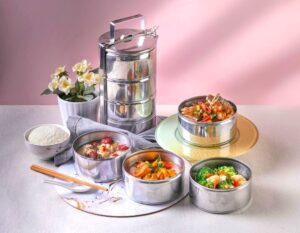



 View All
View All




 View All
View All








 View All
View All





